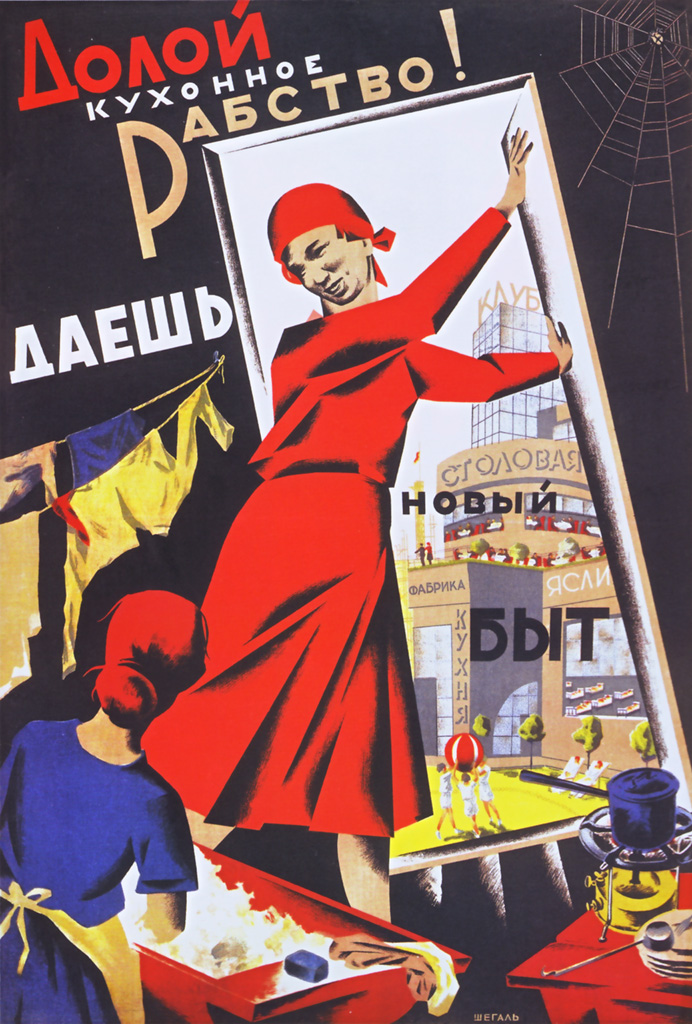Byt is the Russian term for Everyday Life. The search for a new byt that could supplant the traditional bourgeois family structure was a fundamental issue to be addressed in the early Soviet era. Inspiration came from Lenin himself, who wrote in 1919 that “the real emancipation of women and real communism begins with the mass struggle against these petty household chores and the true reforming of the mass into a vast socialist household”.

DEINEKA, 1931
Trotsky as well dedicated several articles in the Pravda in the twenties to the necessity of reforming the everyday. One of the main aspects at stake was women’s oppression, and how the new socialist organisation would provide the conditions for their full participation in the productive, political and cultural life of the new state. The traditional hearth of the nuclear family was to be eradicated, substituted by modern typologies based on the maximum collectivisation and the standardisation of productive functions, including cooking, eating, physical activity, personal hygiene and child care Religious symbols, such as traditional Orthodox icons, were prohibited and progressively substituted by the so-called “red corners” (Etazherka) dedicated to the cult of the Bolshevik leaders, beginning with Vladimir Lenin. Constructivist architects vigorously adopted the objective of the collective reformation of the Soviet *byt*, dedicating themselves to designing effective and affordable solutions to the realisation of new spatial conditions.